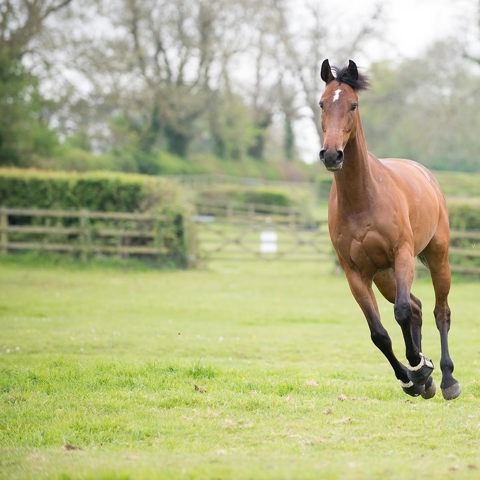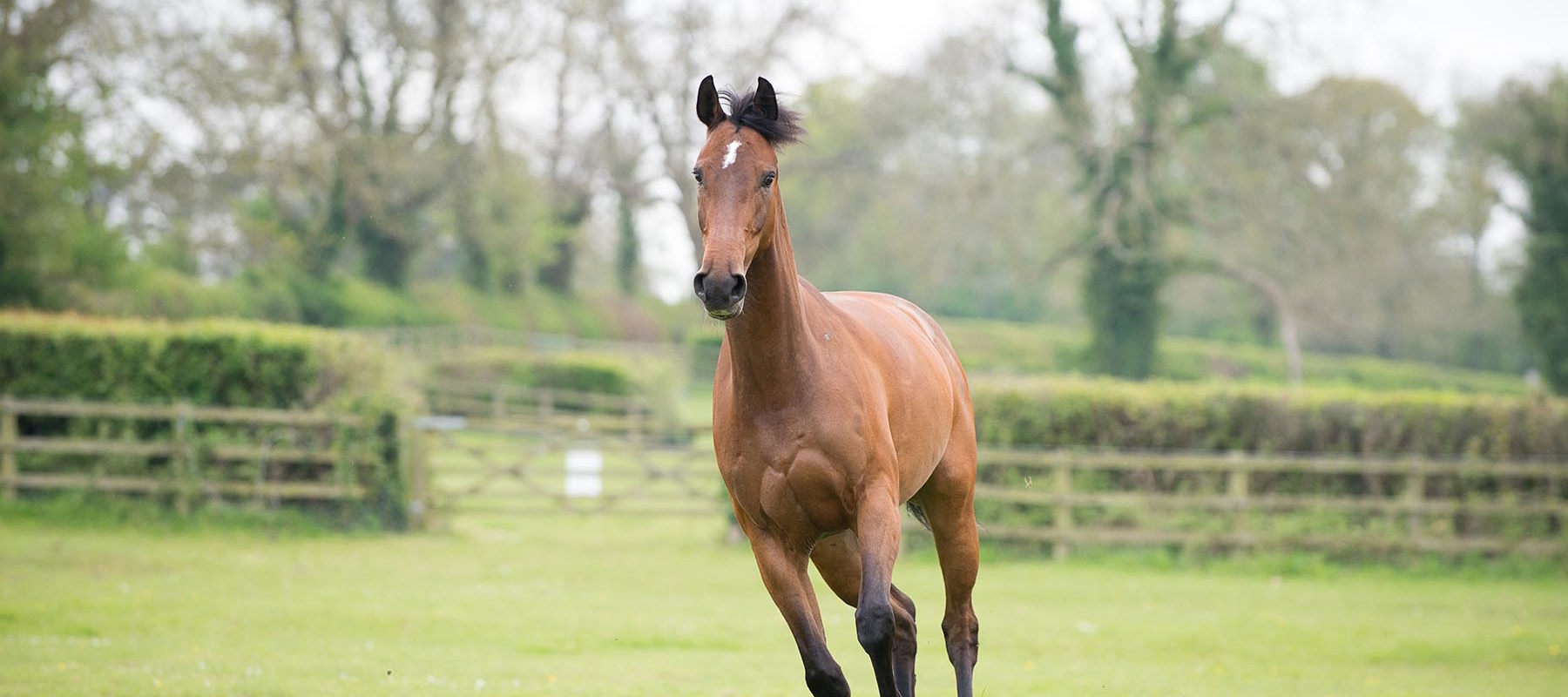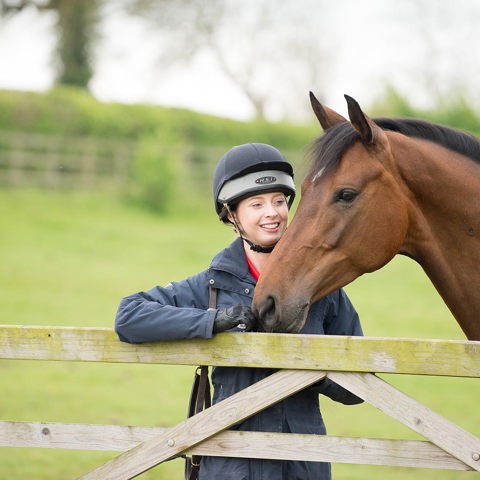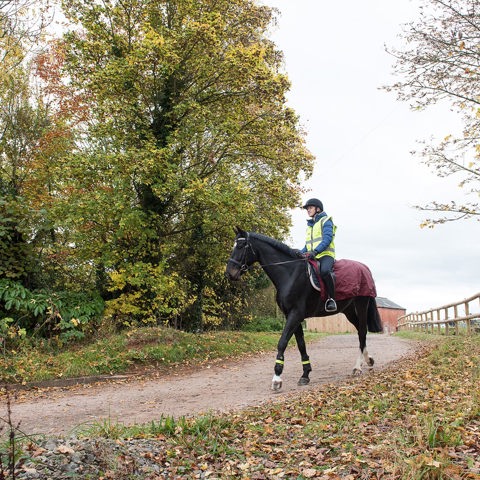Understanding fitness
As with humans, excess weight and lack of exercise can have a negative impact on the health and wellbeing of a horse.
There are many reasons why our horses may have dropped their level of fitness, but the key to improving is to always take it slow, create a practical, individual plan and avoid rushing for quick results.
Don’t confuse eagerness for fitness! Like ourselves, our horses may be keen to get out and about. This eagerness will get the adrenaline pumping and can make the horse appear fitter than they are. Assess your horse’s current workload and tailor their individual fitness programme accordingly.
Maintaining fitness isn’t just about reaching a goal, it’s an ongoing journey that requires attention and care for both you and your horse. As well as keeping up regular aerobic exercise (light to moderate activity raising the heart/respiration rate, maintained for longer periods as your horse gets fitter), you might consider some other factors that also make a significant contribution to your horse’s fitness and health, and will help to reduce setbacks and injury.
Rider fitness
As a rider, your own fitness matters too. Dedicating 10-15 minutes daily to balance and core exercises can positively impact your stability in the saddle and reduce stress on your horse’s back1.
Respiratory health
Horses evolved in a natural environment of open pasture with limitless fresh air. In modern day management, when horses are removed from open pasture into more confined environments their respiratory health may become compromised which, over time, can affect their wellbeing and performance.
Hoof care
Regular farrier visits
chevron-down
chevron-up
Whether shod or unshod, maintaining a farrier schedule is crucial. Regular professional hoof care helps detect any changes or abnormalities early.
Signs of lameness
chevron-down
chevron-up
If your horse is showing signs of lameness, consult your vet for further support.
Returning to work
chevron-down
chevron-up
If your horse’s shoes were previously removed due to reduced exercise, talk to your farrier before resuming work. Monitor your horse’s coping ability if they remain unshod and seek professional advice if you have any concerns.
Feeding
Balanced diet
chevron-down
chevron-up
Many leisure horses do well on a high-forage, low-sugar and starch diet with an additional balancer or vitamin and mineral supplement.
Monitor weight
chevron-down
chevron-up
Weighing your horse is a useful monitoring tool but it doesn’t distinguish between muscle and fat; horses are individuals and carry fat in different places. Getting hands-on and fat scoring your horse every two weeks is another way to help monitor if your horse is a healthy or unhealthy weight.
Gradual changes
chevron-down
chevron-up
There may be circumstances where additional concentrate feeds are needed, for example, if your horse is struggling to keep weight on.
- Discuss your horse’s individual needs with a qualified nutritionist who can advise you by producing a tailored feeding plan
- It’s essential that any adjustments to the horse’s diet are made gradually over a minimum of 10-14 days to reduce the risk of colic.
Post-exercise mineral replacement
chevron-down
chevron-up
After intense exercise (for example, sustained canter work or cross-country training), your horse may lose minerals, known as electrolytes, through sweating. Electrolytes are made up of sodium, chloride and potassium.
An electrolyte supplement may be beneficial to replace these lost elements, especially when the weather is warmer.
Behaviour
As horses are a prey animal, they have evolved to be experts at hiding pain and discomfort. If you notice a change in your horse’s behaviour, make sure that all basic care has been checked such as their saddle fit and dental health. If you still have concerns for your horse, consult your vet as this may be an indicator that they’re in pain.
Reasons for changed behaviour
chevron-down
chevron-up
- Workload: if your horse isn’t coping well, consider if their workload is right for them
- Environment: restricted turnout or inappropriate surroundings can affect behaviour
- Feeding: inappropriate diet may play a role (such as too much sugar)
- Tack fit: an ill-fitting saddle, bridle or bit can cause issues
- Dental health: make sure that your horse’s dental check is up-to-date
- Stress: watch out for the subtle signs of stress as an indicator that your horse isn’t coping.
Signs of changed behaviours
chevron-down
chevron-up
- Some examples of changed behaviours include resistance to the bridle, evading contact, changing leads regularly in canter, unwillingness to go forward, head tossing, bucking, rearing or showing signs of discomfort when being tacked up
- Watch out for more subtle signs such as head tilting, tail clamping or repeatedly opening their mouth.
Tack Fit
Your horse will alter shape as their level of fitness changes, and they will need their saddle checking before you embark on a fitness programme, as a poorly fitting saddle can cause prolonged pain and discomfort.
Remember at the start of your fitness programme your horse’s back will be weaker and more prone to injury1. Making sure your saddle fit is checked regularly will give your horse the best chance at keeping a healthy, pain-free back.
The horse’s shape can change dramatically under the saddle area, after as little as four to six weeks of regular ridden training. Even small changes in fitness can have a big influence on how well a saddle fits. As well as making sure your saddle fits correctly, it’s equally important to assess bridle fit. When it comes to fitting a bridle, it’s important to remember that all horses are different, and you need to fit each bridle to the individual horse.
References
1. Domańska-Kruppa, et al 2024. Advances in the Clinical Diagnostics to Equine Back Pain: A Review of Imaging and Functional Modalities. Animals, 14(5), p.698




